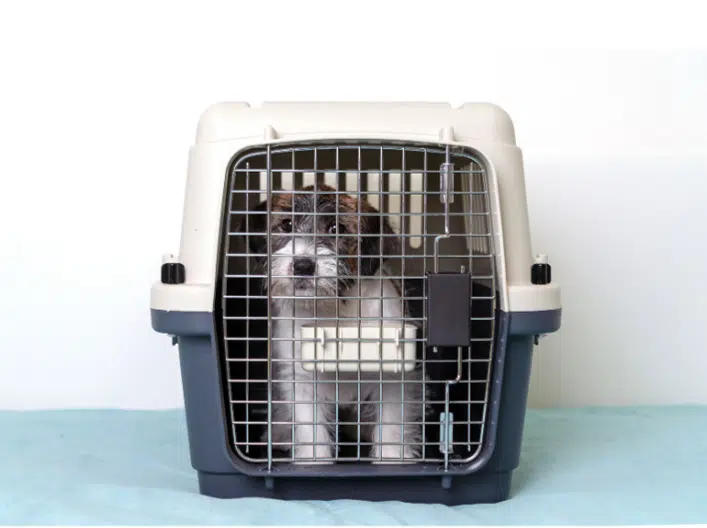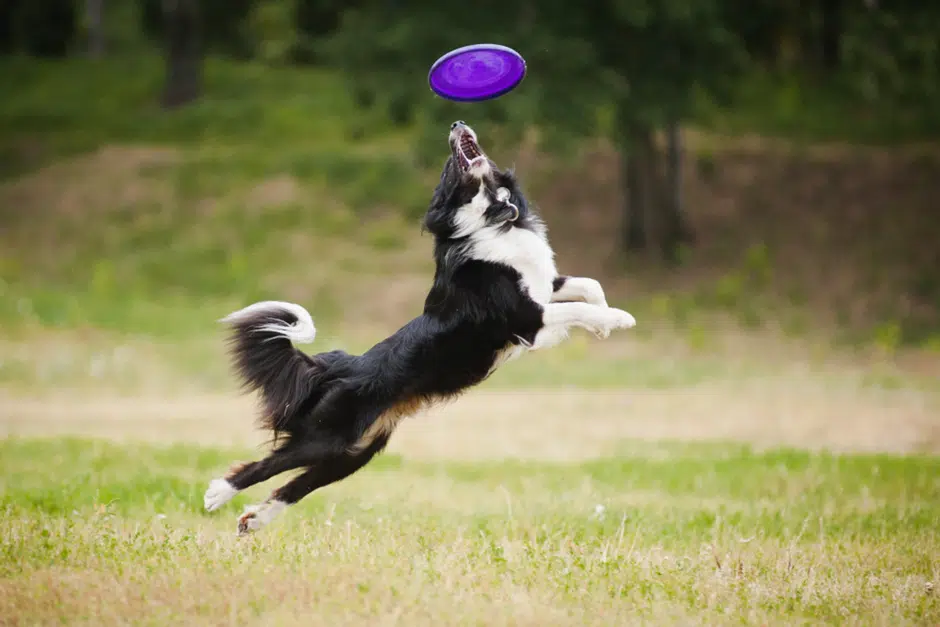Introduction to the Crate Training Process
Definition of Crate Training
Crate training is a widely recognized method for creating a safe space for dogs. It’s a process, not a one-time event, aimed at making dogs feel secure and comfortable in their crates. This method is a matter of fact approach used by many dog owners to manage behavioral issues and ensure dog safety.
FurLyfe.com: Calling all Dog Lovers!!!
Importance and Purpose of Crate Training a Puppy
Crate training is crucial for house training both young puppies and adult dogs, serving as an essential tool for instilling discipline and routine. According to the Crate Training Basics from the American Kennel Club, it plays a pivotal role in mitigating separation anxiety and controlling excited behavior in dogs. Creating a routine for regular meals and potty breaks is another significant aspect of crate training, ensuring that the dog understands and follows the household rules.
Reasons to Crate Train
The reasons to start crate training are multifaceted. It provides a secure environment when dog owners are not around, ensuring the safety of both the pet and the household items. The Humane Society on Crate Training emphasizes its role in housebreaking, especially useful for a new puppy, and in managing behavioral issues such as excessive whining or barking. Transportation is another area where having a crate-trained dog is beneficial, making travel experiences less stressful for the pet.
Brief Overview of the Crate Training Process
Introducing a dog to crate training involves several steps. Initially, the dog briefly is introduced to the crate, and feeding begins inside the crate with a few treats and the crate door open. Gradually, the time in the crate is increased, ensuring the dog feels comfortable. Then more feeding or whole meals in the crate. Maintaining a positive dog crate environment is crucial, and this can be achieved by placing the dog’s favorite toy and small food bowl with treats inside the crate.
Selection of Appropriate Crate
Choosing the right size and type of crate, such as a wire crate, plastic crate, or soft sided, is essential. The crate should be placed in a family room where the dog can see everyone and feel included. The dog should be able to sit quietly and comfortably in the crate, ensuring it feels secure and content.
Ethical Considerations Brief
It’s imperative to ensure that the crate is not used as a punishment tool. Not leaving young dogs or puppies in the crate for long periods is also crucial to avoid any negative association with the crate.
Incorporating these elements and considerations in crate training ensures a harmonious relationship between the dog and its owner, fostering a sense of security and well-being for the pet.
The Crate Training Process
Selection of the Crate
Selecting an appropriate crate is the foundational step in crate training. A wire crate is often a preferred choice due to its robustness and adequate ventilation, ensuring the dog remains comfortable. The size of the crate is pivotal; it should be spacious enough for the dog to stand, turn, and stretch, but cozy enough to feel secure, considering the dog’s age and size. Soft bedding and the inclusion of the dog’s favorite toy can make the crate more inviting and comfortable. It’s recommended to refer to Choosing the Right Crate for more detailed insights on crate selection, ensuring the chosen crate meets the dog’s needs and provides a safe space.
Introduction to the Crate
The introduction of the dog to its crate should be a gradual and positive experience. Initially, meals and stuffed toys should be placed inside the crate to create a positive association, allowing the dog to begin feeding and to associate the crate with pleasant experiences. The crate door should remain open at first, letting the dog explore and exit the crate at will. Consistency and patience during this introductory phase are paramount, allowing the dog to acclimate to the crate without feeling forced or stressed. For more comprehensive advice on creating a welcoming crate environment, Creating a Positive Crate Environment offers valuable recommendations and tips.
Establishing a Routine
Once the dog is familiar with the crate, establishing a consistent routine is the next step. This involves setting regular feeding times, bathroom breaks, and sleeping schedules, all revolving around the crate. The dog should have regular meals and potty breaks, and the time spent in the crate should be increased gradually, starting with short periods. A consistent routine fosters a sense of security and helps in reinforcing positive behavior around crate training. For a deeper understanding of setting up a successful crate training routine, Establishing a Crate Training Routine provides extensive insights and guidelines.
Addressing Challenges and Rewards
Crate training is not without its challenges, and addressing them promptly is crucial. Resistance to the crate is a common issue, and it can be mitigated through positive reinforcement techniques. When the dog sits quietly in the crate, rewarding it with small food treats and verbal praise can encourage acceptance and compliance. Maintaining a calm and matter-of-fact demeanor when placing the dog in the crate avoids triggering excited behavior and ensures a smoother training process. It’s essential to observe the dog’s behavior closely during this phase, adjusting the training procedures outlined as needed to suit the individual dog’s needs and responses.
By meticulously following these steps and recommendations, maintaining a positive and consistent approach, the crate training process can be a rewarding experience, fostering a sense of security and well-being for the dog, and peace of mind for the owner.
Duration, Challenges, and Conclusion of Crate Training
Duration, Challenges, and Conclusion of Crate Training
How Long Does Crate Training Last?
The duration of crate training is highly variable, contingent on the dog’s individual temperament and age. Some dogs may adapt to the crate swiftly, while others might necessitate extended patience and consistent efforts. It’s crucial to observe each dog’s unique responses and adjust the training pace accordingly, ensuring a positive and stress-free experience.
Factors Affecting the Duration of Crate Training
Several factors can influence the duration of crate training, including the dog’s past experiences, individual personality, and the consistency of the training approach. The environment in which the dog is raised and the behavior exhibited by the owner are pivotal, as highlighted by Cesar’s Way: Crate Training. A conducive environment and positive owner behavior can significantly expedite the training process, allowing for a smoother adaptation and minimizing resistance.
Detailed Overview of Common Challenges and Solutions
Often times a dog whines while in the crate. Resistance, anxiety, and stress are prevalent challenges in crate training. These challenges necessitate a comprehensive understanding of positive reinforcement and a tailored approach to address each dog’s unique needs. For an in-depth exploration of strategies to mitigate these challenges, Addressing Crate Training Issues is a valuable resource. Employing appropriate strategies and maintaining patience are paramount in navigating through these challenges successfully.
When Can I Stop Crate Training?
Determining when to phase out crate training involves recognizing consistent behavior and house training success in dogs. It’s essential to gradually increase the dog’s freedom, meticulously observing their behavior to ascertain readiness. Monitoring for signs of distress or destructive behavior is crucial during this transition to ensure the dog is genuinely ready to be left uncrated.
In-depth Solutions to Challenges
Addressing resistance and anxiety involves a gradual introduction to the crate and establishing positive associations with it. Techniques such as providing treats and favorite toys that are provided as most pet supply stores can help in fostering a positive crate environment. For advanced strategies on managing excessive barking and whining, Solutions to Crate Training Problems offers insightful recommendations. Implementing these nuanced solutions can significantly enhance the crate training experience, ensuring the dog’s comfort and the owner’s peace of mind.
Achieving Crate Training Success
Achieving success in crate training involves a harmonious blend of patience, consistency, and understanding of the dog’s individual needs and personality. Regularly assessing the dog’s comfort levels and adjusting the training procedures outlined are crucial to fostering a sense of security and well-being in the dog. The culmination of crate training should result in a well-adjusted dog that views the crate as a safe space, allowing owners to have peace of mind when leaving their pets unattended.
By meticulously addressing each aspect of crate training, from the selection of the crate to the resolution of challenges, dog owners can ensure a successful and enriching crate training journey for most dogs, contributing to a harmonious and joyful coexistence with their furry companions.
Advanced Crate Training Tips and Techniques
Advanced Crate Training Tips
For those seeking to refine their approach, advanced crate training tips can be pivotal. Varying the crate location and introducing new crate experiences can keep the dog engaged and comfortable. Incorporating nuanced strategies from Advanced Crate Training Techniques can significantly enhance the crate training experience, ensuring sustained interest and comfort for the dog.
Behavioral Training Integration
Integrating behavioral training with crate training can holistically address issues like excessive barking and separation anxiety. A focus on overall obedience and well-being is crucial for comprehensive training. Referencing Integrating Behavioral Training can provide insights into melding behavioral and crate training effectively, fostering a well-rounded and obedient canine companion.
Crate Training Adult Dogs and Older Dogs
Crate training adult and older dogs necessitate modifications in the training procedures, emphasizing a more gradual introduction and immense patience. Addressing the unique needs and challenges of older dogs is crucial, and insights from Training Adult Dogs can be invaluable in navigating the nuances of training mature dogs.
Ethical Considerations and Animal Welfare
It’s paramount to use the crate as a positive space and not as a punitive tool. Upholding ethical dog training methods is essential to ensure the dog’s comfort and well-being throughout the crate training journey.
Addressing Setbacks in Crate Training
Setbacks, such as regression and resistance, are common in crate training. Maintaining consistency and leveraging positive reinforcement are essential to effectively navigate through any crate training setbacks and ensure a smooth training progression.
By employing advanced tips and integrating behavioral training, dog owners can ensure a more comprehensive and ethical approach to crate training, addressing the unique needs of each dog and fostering a harmonious relationship between the pet and the owner.
Conclusion and Additional Resources
Recapitulation of Crate Training Importance
Crate training stands as a fundamental component in fostering a secure and structured environment for dogs. It’s not merely a training tool; it’s a means of mitigating various behavioral issues and ensuring the safety and well-being of the dog. This method is instrumental in cultivating a balanced and harmonious relationship between pets and their owners, allowing for mutual respect and understanding to flourish.
Summary of Advanced Tips and Techniques
Throughout this article, we delved into a multitude of advanced crate training tips and nuanced techniques. We explored the significance of integrating behavioral training to address a spectrum of behavioral nuances and challenges, especially focusing on adult and older dogs. The insights provided are designed to equip pet owners with the knowledge to tailor their approach, ensuring the training experience is positive and constructive. For a more comprehensive understanding of crate training procedures and modifications, the Comprehensive Guide to Crate Training is an invaluable resource.
Additional Resources and Further Reading
For those who are keen on deepening their understanding and enhancing their crate training strategies, several professional and detailed resources are available. These resources provide a wealth of information, expert advice, and practical tips to navigate the intricacies of crate training effectively. One such resource, Crate Training Tips from Veterinarians, offers a plethora of expert advice and practical tips, ensuring pet owners can approach crate training with confidence and knowledge.
Ethical Considerations and Animal Welfare
In concluding, it’s imperative to reiterate the importance of maintaining ethical considerations and prioritizing animal welfare throughout the crate training process. The crate should never be used as a punishment tool but should serve as a safe and positive space for the dog. It’s our responsibility as pet owners to ensure the comfort, well-being, and happiness of our pets, respecting their needs and individual personalities.
Final Thoughts and Recommendations
In the journey of crate training, patience, consistency, and positive reinforcement remain paramount. It’s about creating a harmonious living environment where both the pet and the owner feel secure and understood. By maintaining a positive and ethical approach to crate training, we can ensure the well-being and comfort of our furry friends, fostering a loving and mutually beneficial relationship.
By meticulously applying the advanced tips, integrating behavioral training, and utilizing the wealth of available resources, pet owners are well-equipped to ensure a successful and enriching crate training experience, contributing to a serene and joyful coexistence with their pets.
FAQ – How Long Does Crate Training Last?
Q1: How long does it typically take to crate train a puppy?
A: The duration can vary widely, but typically, it can take several weeks to several months. Consistency, patience, and positive reinforcement are key to speeding up the process.
Q2: Is there a difference in crate training duration between puppies and adult dogs?
A: Yes, adult dogs, especially those with negative past experiences, may take longer to crate train compared to puppies who are generally more adaptable.
Q3: Can crate training last longer for certain breeds?
A: While individual temperament plays a more significant role, some breeds with more independent or stubborn nature may take longer to crate train.
Q4: Is it cruel to crate train a dog?
A: No, when done correctly, crate training can provide a safe and secure space for dogs. It should never be used as a form of punishment.
Q5: How long should a dog be left in a crate?
A: Adult dogs can manage for up to 8 hours; however, puppies need more frequent breaks. The crate time should be balanced with ample time for both play time and exercise.
Q6: What are the signs that my dog is well crate trained?
A: Signs include willingly entering the crate, staying calm inside it, and being able to remain in the same crate, without whining or showing signs of distress.
Q7: Can I crate train an older dog?
A: Yes, older dogs can be crate trained with patience and positive reinforcement, but it might require more time and adaptation to their specific needs and preferences.
Q8: What should I do if my dog resists crate training?
A: Maintain patience, offer treats and positive reinforcement, and ensure the crate is comfortable. Gradual introduction and making the crate a positive space are crucial.
Q9: How can I make the crate more comfortable for my dog?
A: Include soft bedding, favorite toys, and treats. Ensure the crate is of the right size, allowing the dog to stand, turn, and lie down comfortably.
Q10: Can crate training help with separation anxiety?
A: Yes, it can help by providing a secure space for the dog. However, severe cases of separation anxiety may require additional behavioral training and veterinary consultation.
Interesting Read















Get involved!
Comments